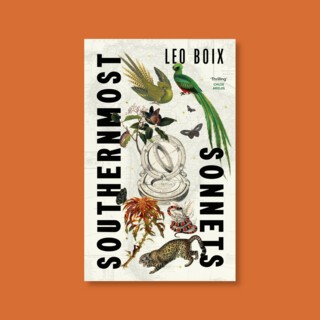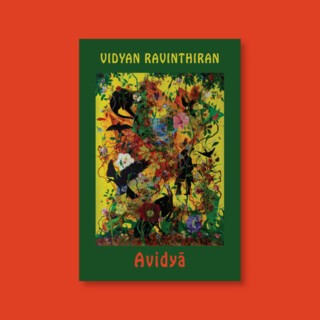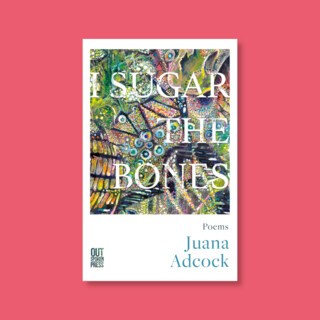Forward Prizes 2025 | ‘Southernmost: Sonnets’ – How I Wrote It
Posted by Leo Boix

We’ll find out who the winners are of the 2025 Forward Poetry Prizes tomorrow night, but in the meantime, we’re proud to present our final piece from the shortlisted poets: Leo Boix on the writing process behind Southernmost: Sonnets (Chatto), his second collection.
My fascination with the sonnet started as a child in Buenos Aires. On long, sweltering afternoons, my aunt – a social worker who helped children in the shanty towns – would read me Borges, Darío, and Neruda in my grandfather’s small garden. She would declaim these sonnets with a music and cadence she didn’t normally use, which left me spellbound. Her way of reading – the emphatic inflections, the musical endings, almost sung – was easy for a child to internalise, even with sonnets as complex as these, because they became nursery rhymes. My grandfather was also an avid reader, albeit eclectic and autodidactic, and got through a vast amount of books on pretty much everything, from historical novellas to books on insects and plants.
Although I didn’t realise it then, those afternoons would shape me into a bilingual writer in England decades later. They ignited my interest in how to describe the natural world, as well as the emotions and rhythms of telling a story that could be universal.
Borges’s sonnets in particular struck a chord as a child, feeling like intricate portals to new universes. He was a famous Anglophile, and through his poems, I discovered a wider constellation of voices, such as Shakespeare, Milton, the English Romantics – especially Keats – and the Old English poets. His Anglophilia somehow infected me, transporting me to my new country in the late 1990s. Among the books I brought with me from Argentina were the three tomes of Borges's Obras Completas by Emecé Editores and an old edition of Azul by Rubén Darío, which I still treasure.
After my first full English collection, Ballad of a Happy Immigrant (Chatto & Windus), appeared in June 2021, I began work on what I called ‘Latin American Sonnets.’ These earlier tentative poems became a way to explore the continent of my birth and its contrasting landscapes and histories. The first three sonnets, published in PN Review, encouraged me to continue.
Instead of choosing the Petrarchan sonnet rhyme pattern often used by Latin American writers, I kept the Shakespearean rhyme scheme as a starting point (abab cdcd efef gg), a nod to my new home and newly acquired language. I also maintained the 14-line structure, the volta or ‘turn’, and preferred the final couplet from the Shakespearean sonnet that often offers a conclusion. However, I moved from strict iambic pentameter to a looser, distinctly Latin American rhythm. These earlier sonnets allowed me to explore, from and to South America in the diaspora. They enabled me to be in two places at once, looking out from my English shores to that distant land and seeing the Old World through the eyes of a young Latin American boy. I became Darwin, Drake, or Humboldt in their transhemispheric voyages, and a Latinx migrant fascinated by English history, literature, and language.
From the outset, I aimed to create a connected sequence about South America and anything that resonated with that intricate world, drawing on my teenage travels – backpacking alone from Argentina and Bolivia to Chile, Peru, Ecuador, and Brazil, as well as my experiences as a Latin American migrant in England, the misreadings of a new culture.
I wrote obsessively in our old seaside house in Deal, East Kent, a former sea captain’s residence where I lived for over a decade with my partner, visual artist Pablo Bronstein, before returning to north London. The themes varied each day, and I would revisit and rewrite them months later, adding more sonnets to the growing sequence.
Swimming in the freezing English Channel often sparked new ideas. I would dive in – winter, spring or summer – and come back with fresh lines in my mind, usually related to the sea, exploration and ‘discoveries’. Inspiration also came from books of poetry and fiction I read for my monthly The Morning Star column, ‘Letters from Latin America,’ and family stories passed down by my mother and aunt.
My reading in those years spanned Darwin’s Voyage of the Beagle, Humboldt’s Personal Narrative of a Journey to the Equinoctial Regions of the New Continent, Bruce Chatwin’s In Patagonia, and W.H. Hudson’s The Purple Land. All were written from the perspective of travellers trying to interpret, record and convey the landscapes, peoples and cultures they encountered. They blended science, observation and imagination, romanticising the ‘frontier’.
I searched encyclopedias, botanical and ornithological guides, historical archives and journals, and 16th-century herbals; visited South American collections at the British Museum; and studied artefacts and manuscripts looking for images and narratives to integrate into the work. Behind my writing desk in Deal, I had assembled a small ‘cabinet of curiosities’ filled with things I would find on the beach and in second-hand shops, from unusual rocks and an old telescope to birds’ fossils and dried insects, all of which surrounded my working space as I wrote these sonnets compulsively. Those disparate objects in my cabinet began to assemble into a group of pieces – much like my sonnets – with interlinking stories.
Gradually, the sonnets began blending together family history with South American politics, geography, ecology and art. I would spread these printed sonnets on the floor, moving them around to weave through unexpected narratives and make each sonnet speak to the next.
Southernmost: Sonnets contains 100 sonnets in many forms (I wrote many hundreds!), including list poems, Concrete poems, and sonnets with an ekphrastic quality. The connections are sometimes subtle, and sometimes expansive: from a South American bird’s flight in the Amazon to my mother’s final days in Quilmes; from conquistadors’ visions in Tenochtitlán to missionaries’ evangelising indigenous communities in the 16th century; from British explorers’ spyglasses to the binoculars I often use to look at butterflies, plants and birds in my garden in Camden.
The title of the collection came later in the process. I tried to convey a sense of distance, both geographically and symbolically. The word ‘southernmost’, with its 19th-century feeling, evokes that faraway place, the almost vanishing point of a memory or an idea, the ultimate sense of remoteness and mythical travels, but also of poetic finality – the ‘last’ point in a direction, symbolising both limits and ends, and the edge of the known world.
Leo Boix is the author of Southernmost: Sonnets, published by Chatto & Windus. See all the books on the Forward Prize shortlists here.









